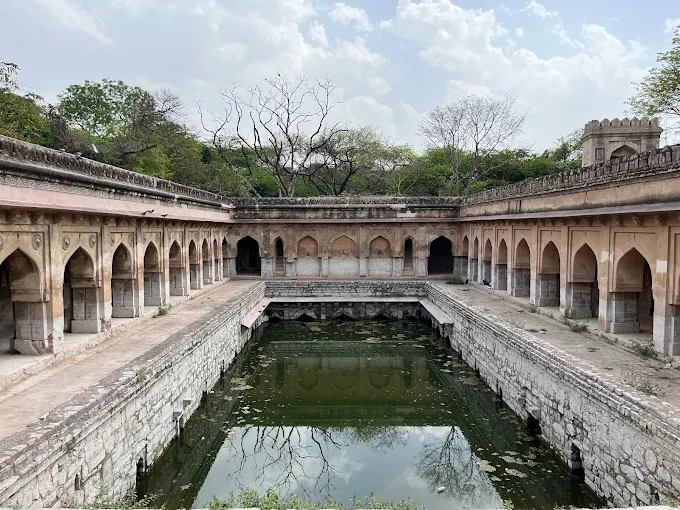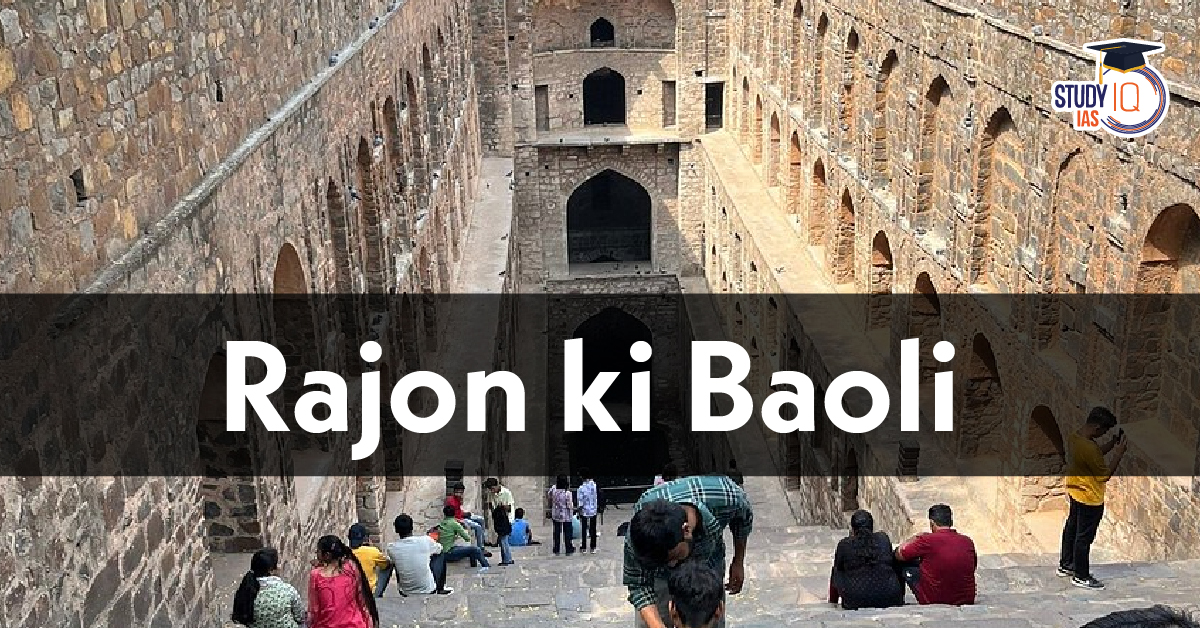Table of Contents
Context: The Archaeological Survey of India (ASI) completed the conservation of Rajon ki Baoli.
About Rajon Ki Baoli
Rajon Ki Baoli, or Rajon ki Bain, is an important historical stepwell that falls within the Mehrauli Archaeological Park, South Delhi, India. It is a reflection of the Lodi dynasty’s architectural and water management skill, a pre-Mughal Indian ruling dynasty.
- Type: Stepwell (Baoli)
- Period: Lodhi-era, built in the 16th century
- Location: Mehrauli Archaeological Park, New Delhi
- Built by: Daulat Khan (a noble of Sikandar Lodi’s court).

Restoration and Current Status
Rajon Ki Baoli recently went through a painstaking conservation and revitalisation process, completed successfully by the Archaeological Survey of India (ASI) in partnership with the World Monuments Fund India (WMFI) and the TCS Foundation. The restoration was declared in May 2025.
This work falls under WMFI’s “Historic Water Systems of India” program and is aligned with the “Climate Heritage Initiative,” which focuses on the significance of traditional water systems as sustainable alternatives for water management, particularly in light of climate change.
Architectural Features of Rajon Ki Baoli
- Consists of arched corridors on each side.
- Made using traditional lime plaster and mortar.
- The complex also has a mosque, a tomb, and a chhatri (pavilion).
- Exhibits a blend of functional architecture and Indo-Islamic design.
- Originally built to serve as a water reservoir for local residents and travellers.
- The name “Rajon” refers to the masons (raj mistris), not royalty.
Historical Significance of Rajon Ki Baoli
- Construction: It was ordered in 1506 CE by Daulat Khan in the reign of Sikander Lodi, one of the important rulers of the Lodi dynasty.
- Name Origin: The name “Rajon ki Baoli” means “Baoli of the Masons.” This proves that it was probably utilised by masons as drinking water and cooking water, or even constructed by masons residing in the vicinity. This dispels a general false assumption that “Rajon” pertains to kings.
- Purpose: Apart from being an essential water reservoir, particularly in Delhi’s traditionally water-starved context, it also acted as a cool refuge during the hot summer months and a social hub. Several baolis were also constructed close to mosques and temples, fulfilling a socio-religious function.


 Poompuhar Port: Ancient Sangam-Era Marit...
Poompuhar Port: Ancient Sangam-Era Marit...
 UNESCO World Heritage Sites of India Lis...
UNESCO World Heritage Sites of India Lis...
 Moran Community of Assam, History, Langu...
Moran Community of Assam, History, Langu...

























